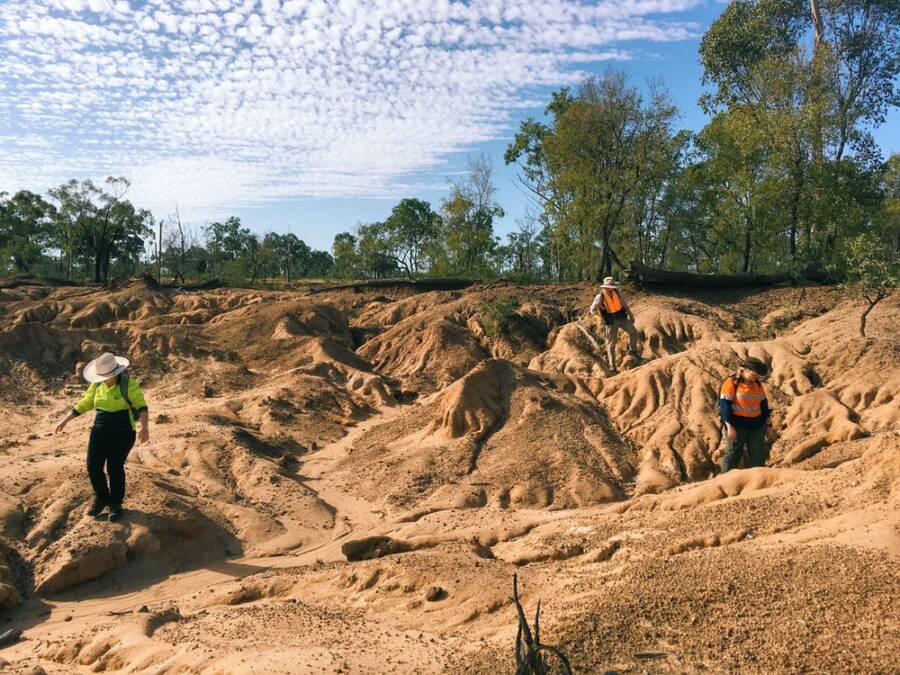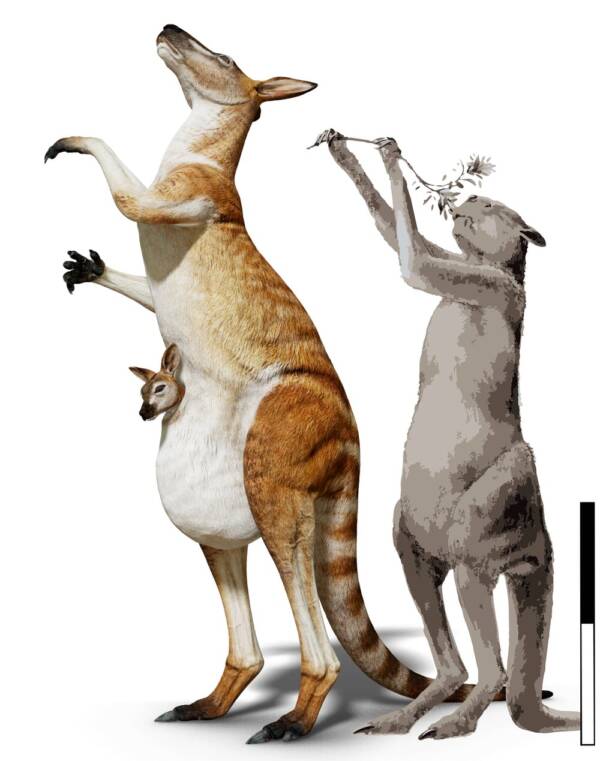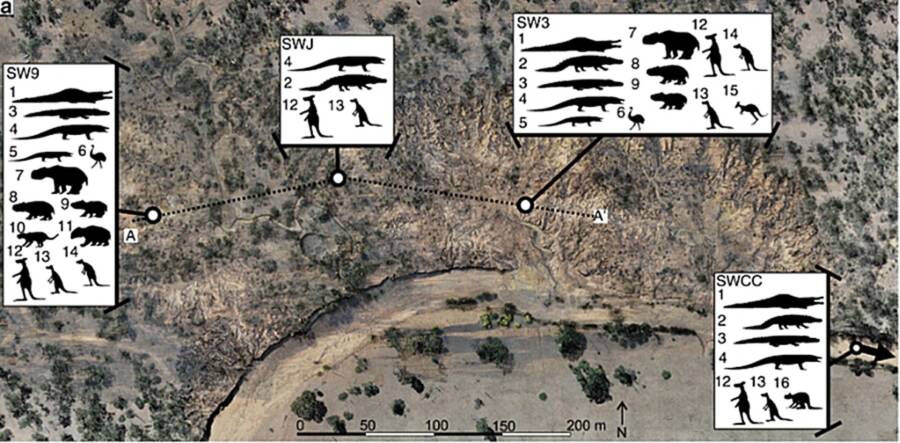Australian megafauna, like giant kangaroos and car-sized lizards, coexisted with humans for at least 15,000 years before perishing.

Rochelle Lawrence/Queensland MuseumResearchers uncovered at least 13 species of extinct megafauna that once roamed in prehistoric Australia.
Between 40,000 and 60,000 years ago, the land that we now call Australia was populated with gigantic creatures of all kinds, including kangaroos twice the size of man and dragon-like goannas. And according to a new study, early humans actually co-existed alongside these humongous beasts for tens of thousands of years.
Over the last decade, researchers Scott Hocknull and Anthony Dosseto have studied bones excavated from four separate archaeological sites, including some fossils discovered by the indigenous Barada Barna people on their ancestral lands in the central Queensland region of Australia.
Fossil analysis has shown that at least 13 extinct species of gigantic animals once settled around South Walker Creek, 60 miles west of Mackay. Here, mega-reptiles hunted mega-mammals while humans arrived and were spreading throughout the continent.
These early humans would have come into contact with megafaunas like the 19-foot goanna, a giant bucktoothed wombat, and a peculiar species of giant marsupial called Diprotodon, which weighed in at three tons and has been described as a sort of “bear-sloth.”

Scott Hocknull/Queensland MuseumThe unnamed species of giant kangaroo (left) is much larger than the short-faced kangaroo (right) which was previously believed to be the largest kangaroo species yet known.
Perhaps the most bizarre creature researchers discovered, however, was a giant kangaroo. Weighing in at about 600 pounds, this mega-sized marsupial is the largest kangaroo species to ever be identified. The species has not yet been named but is larger than the previously discovered goliath short-faced kangaroo or Procoptodon goliah.
Meanwhile, the deadliest mammal that the researchers have identified was the carnivorous Thylacole, commonly described as a “marsupial lion.” Additionally, living alongside these beasts were creatures we still see today, like the emu, the red kangaroo, and the saltwater crocodile.
Many of the species that researchers identified are believed to be new or could be northern variations of their southern counterparts. It was also found that some species which were believed to have gone extinct were actually still thriving in at least one other location.
The identification of these giant creatures not only paints a stunning portrait of what life was like in the wilds of Australia tens of thousands of years ago, but it also gives researchers a better understanding of the impact that these beasts had on their environment.
“These megafauna were the largest land animals to live in Australia since the time of the dinosaurs,” the researchers wrote. “Understanding the ecological role they played and the environmental impact of their loss remains their most valuable untold story.”
Additionally, this study shows that humans likely weren’t the cause of these giant creatures’ demise. Previous studies have suggested that megafauna and early Australians coexisted for over 17,000 years, and this study shows that humans and megafauna did indeed cohabitate for somewhere between 15,000 to 20,000 years.
It was widely believed that overhunting by humans eventually led to the extinction of Australian megafauna, but this study has shown that because humans and these giant creatures lived side-by-side for so long, hunting likely wasn’t the reason why they died.

Hocknull et alThese fossils were dispersed across four separate excavation sites.
Based on these findings, researchers concluded instead that megafauna likely went extinct as a result of a drastically changing environment.
“The timeframe of their disappearance coincided with sustained regional changes in available water and vegetation, as well as increased fire frequency,” the researchers noted. “This combination of factors may have proven fatal to the giant land and aquatic species.” It appears then that climate change was likely the reason why Australian megafauna went extinct.
Meanwhile, scientists are still trying to figure out how some species that lived among the megafauna, like the emu and saltwater crocodile, managed to survive those drastic environmental changes through to modern-day.
Next, learn about what drove history’s most horrifying shark, megalodon, to extinction. Then, check out the largest blue whale fossil ever recovered.





